Old Galway
GALWAY BOHEMIANS, THE EARLY DAYS
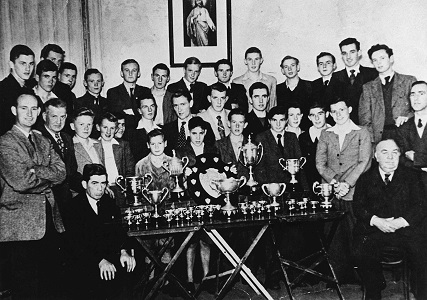
by Tom Kenny
John O’Dowd got the inaugural juvenile soccer league (for boys under-16) underway in Galway in1931-2. The clubs competing included Crusaderrs, Hotspurs, Reds United, Emmetts, Unknowns, Bective Rangers and Hibernians. The swamp was the only soccer pitch available in Galway at the time. The league was a big success and this prompted the organisers to run a minor league in the 1932-33 season.
In the season 1934-5, the Free State Minor Cup was introduced and was the beginning of under-age soccer at National level. John O’Dowd decided that Galway should be represented in this competition and so Galway Bohemians A.F.C. was formed with a team selected from the best players from Crusaders and Hotspurs. Their good showing in the National competition prompted John O’Dowd to suggest to the players that they should stick together as a fully-fledged Bohemians club and enter junior competitions in Galway and Connacht. After agreement was reached with Hotspurs and Crusaders, the new club was formed.
STREET FESTIVALS
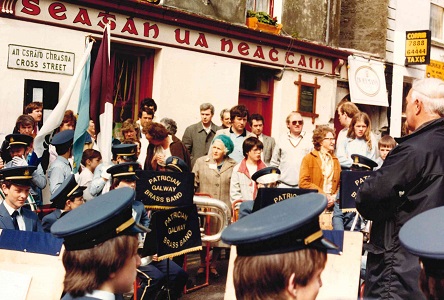
By Tom Kenny
It was professor T.P O’Neill who suggested the idea of celebrating the 500th anniversary of Galway being declared in 1484, to the then County Manager, Seamus Keating, so a Quincentennial Committee was set up. At one of the early meetings, Willy Fahy suggested the idea of street festivals as part of the programme.
The first such festival started on Easter Monday, April 23rd, 1984, organised by the businesses and residents of High St, Cross St and Quay St. The area had considerable charm with an aura of antiquity. Parts off it were run down but some tasteful urban renewal had begun. The idea was to bring a carnival atmosphere to the streets, involving as many locals as possible, to get the shops to spruce up their facades and create a ‘Mardi Gras’ type ambience. Local pride helped the locals to bond to make the events a big success.
ST. NICHOLAS’ PAROCHIAL SCHOOL
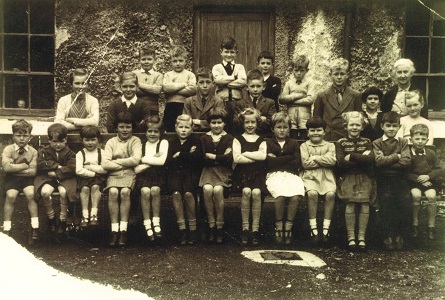
by Tom Kenny
This Church of Ireland School is situated in Waterside beside the courthouse and the Town Hall. The earliest existing school records date back to 1901 to the Model School which was situated on Upper Newcastle Road. It had opened in 1852 with 400 pupils, many of whom were Catholics. This proved too much for the then catholic bishop who set out to make way for explicitly catholic education in Galway. He invited the Mercy Sisters and the Patrician Brothers to set up schools here and made it a ‘reserved sin’ for catholic parents to send their children to the Model School. This resulted in 199 pupils withdrawing and meant the end of multi-denominational education in the city.
The Model school went into decline and it eventually closed down in 1926 and all the pupils transferred to Buckland Buildings on Waterside where St. Nicholas’ Parochial School opened on July 1st of that year. The building had been constructed in 1835 by the Protestant Nautical Society and the inaugural address was given by a distinguished naturalist named Frank Buckland. The lecture was so successful that it was proposed that the Society’s rooms would be renamed Buckland Buildings. They were leased in 1892 to Henry Persse of Glenard, Richard Biggs of the Grammar School and Rev. Fleetwood Berry, rector of St. Nicholas’ Church.
COLLEGE HOUSE AND MONASTERY SCHOOL
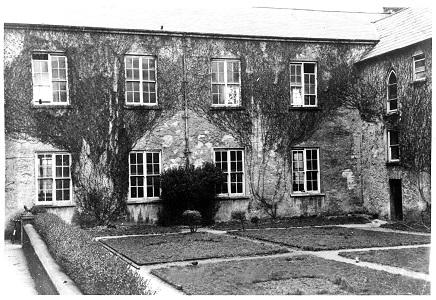
by Tom Kenny
This property originally consisted of College House fronting on Market Street and the Monastery School to the rear of Bowling Green with the residence of the Patrician Brothers to the east of the enclosed quadrangle and the out offices to the west thereof.
College House (sometimes known as Parochial House) was situated just opposite Church Lane. The original College House was on the site of Athy Castle, which was said to be the first stone castle built in Galway. On June 23rd, 1703, as the property of James Ruttledge (who had been accused of treason) and occupied by his wife, Catherine, it was sold by the trustees for selling forfeited estates for £60, by cant in trust for her Majesty. Shortly afterwards, it was converted to an army barracks.
GALWAY CATHEDRAL
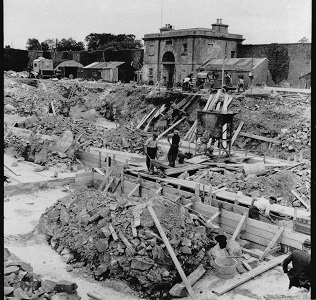
by Tom Kenny
The first bishop of the Diocese was George Browne (1831-1844). He was followed by Lawrence O’Donnell (1844-1855); John McEvilly (1955-1883); Francis Carr (1883-1888); Francis McCormack (1888-1908); Thomas O’Dea (1908-1923); Thomas Doherty (1923-1936) and Michael Browne (1937-1976).
All of them used the Parish Church at the corner of Middle Street and Abbeygate Street as a pro-cathedral but all of them really wanted to build a new cathedral for the city. A fund was started as early as 1876. In 1909, Bishop McCormack bought the Shambles Barracks on Bridge Street with a view to building there. It was eventually decided that the site was too small and St. Patrick’s School was built there instead. The fundraising continued and when Michael Browne became bishop, he began to really push the idea of the cathedral. He even once drew up plans to have it constructed in Eyre Square, (even though did not belong to the church) but again, there would have been no parking facilities, so the idea was dropped.
The gaol was closed down by the Minister on May 1st, 1939, and handed over to the County Council. On March 15th, 1941, they in turn handed it over to the bishop who had earmarked the location as the site for his cathedral. John Robinson of Robinson, Keefe and Devane designed the building. In 1957, the plans were finalised and on February 1st, 1958, work began. John Sisk was the builder who undertook to build the actual fabric of the massive stone building from foundation to dome, excluding interior works such as heating, lighting and ecclesiastical fittings. From the start, various obstacles threatened to hold up work but under the guidance of the site manager Jack Lillis, Martin Cullen, clerk of works, and Joe Keane, site engineer, not to mention the workforce, these were all overcome. The actual building process was slow because of the vast amount of natural stone used in construction.
GALWAY’S EARLY ASSOCIATION WITH THE THEATRE
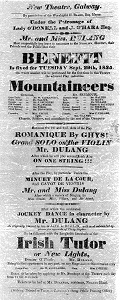
by Tom Kenny
We know from the Corporation record books that theatrical performances were given in the Tholsel, the Town Hall of the day, as far back as 1619-20. These groups of ‘strolling players’ were usually sponsored by local gentry and were regarded as an important feature of festive gatherings.
In 1642, the famous actor Jeremy Whitely came to Galway to join the widow Parker and her company here. He eventually married the widow but dwindling audiences eventually forced them to leave the city. We do not know where in town these performances took place, but if there was no suitable hall available, accommodation was often supplied by resident well-wishers who offered their barns, sheds, stables &c. The audience was usually made up of the gentry, the legal profession and the army.
SEAPOINT BALLROOM
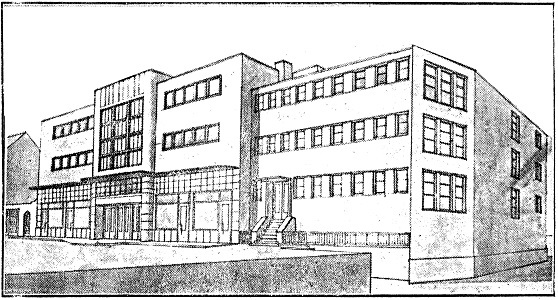
by Tom Kenny
Last week we were writing about Cremen’s Health Spa and Sea Baths at Seapoint, and how the complex was bought out by Salthill man, Noel Finan in 1944. He closed down the baths in 1946. He realised that young Galway people wanted something more than the clean invigorating air and to be clean so he sold the family pub (now Killoran’s) and borrowed heavily from the EBS to build a first class ballroom and restaurant. The restaurant was 4,000 square feet, had ninety tables and could seat 350 diners. Attached to it was a kitchen with the most modern steam and electric equipment. The ballroom had a floor area of 5,200 square feet and was laid with a specially sprung maple floor capable of accommodating more than 2,000 dancers. It also had a balcony which could seat a few hundred people and from which patrons could spot the talent and could, from a distance, comment safely about them.
Seapoint was built in thirteen months by 30 men working for McNallys Contractors. They had to be very careful to work with the tide, so they built a breakwater around the perimeter. The foundations were critical as the building was going to be very high, one of the most imposing in the west. Some young local fellows probably drove the builders mad as they paddled lumps of wood around inside the foundations when the tide was in. Noel Finan told me he could remember no such thing as a crane or large machines during the construction, it was all men carrying blocks and pushing barrows of concrete. He kept at McNallys until he got exactly the dance hall he wanted.
SEAWATER BATHS IN SALTHILL
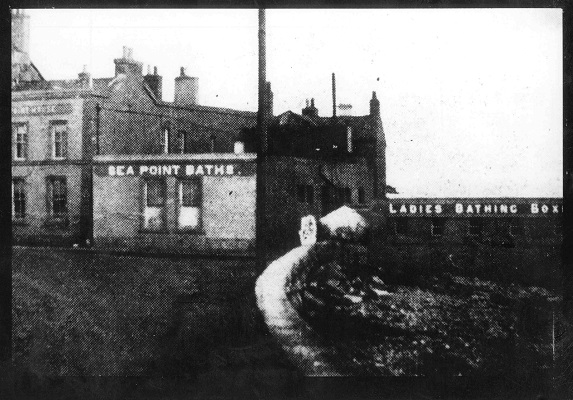
by Tom Kenny
At the beginning of the nineteenth century, Salthill began to develop as a tourist destination. People found the salt air invigorating and the sea was a huge attraction, not just for swimming or paddling, but also for its curative powers. It was thought to have medicinal powers, and so local people began to take advantage of this wonderful asset beside them to possibly make some money.
Dr. Robert Rogers Gray opened his medicinal baths on Salthill Road at the junction with Grattan Road (where Grattan house was later) in 1831. Here, one went straight from a hot air bath to a cold shower bath to get the desired effect. “It is chiefly beneficial in removing Gout in all its forms –chronic rheumatism and rheumatic pains – and swelling of the joints – strengthening the tone of the stomach and thereby being a valuable remedy in Dyspepsia and all the train of nervous feelings consequent on indigestion. It is highly and deservedly recommended for removing the effects of mercury from the constitution and Scrufolous swellings. Ulcers and obstinate diseases of the skin in general yield to a properly medicated Vapour Bath. The plain Warm Baths and Shower Baths &c. will be given by experienced assistants and the medicated Baths under the immediate direction of a Medical gentleman.” With all those potential cures, it was hardly surprising that this technique and also seaweed baths became very popular at many seaside resorts around the country.
.png)